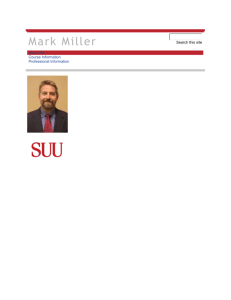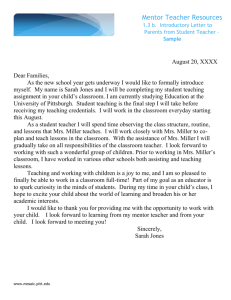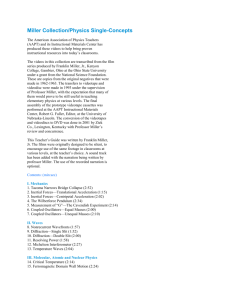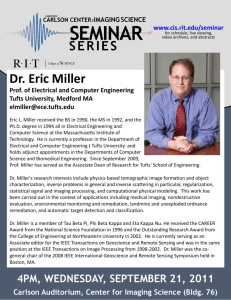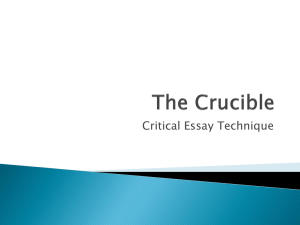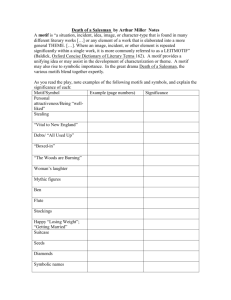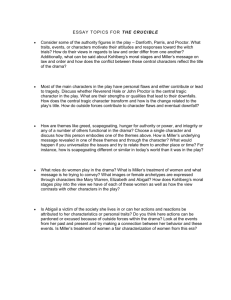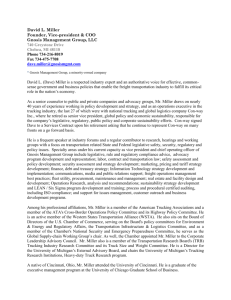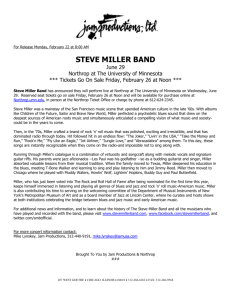The15thCentury2
advertisement
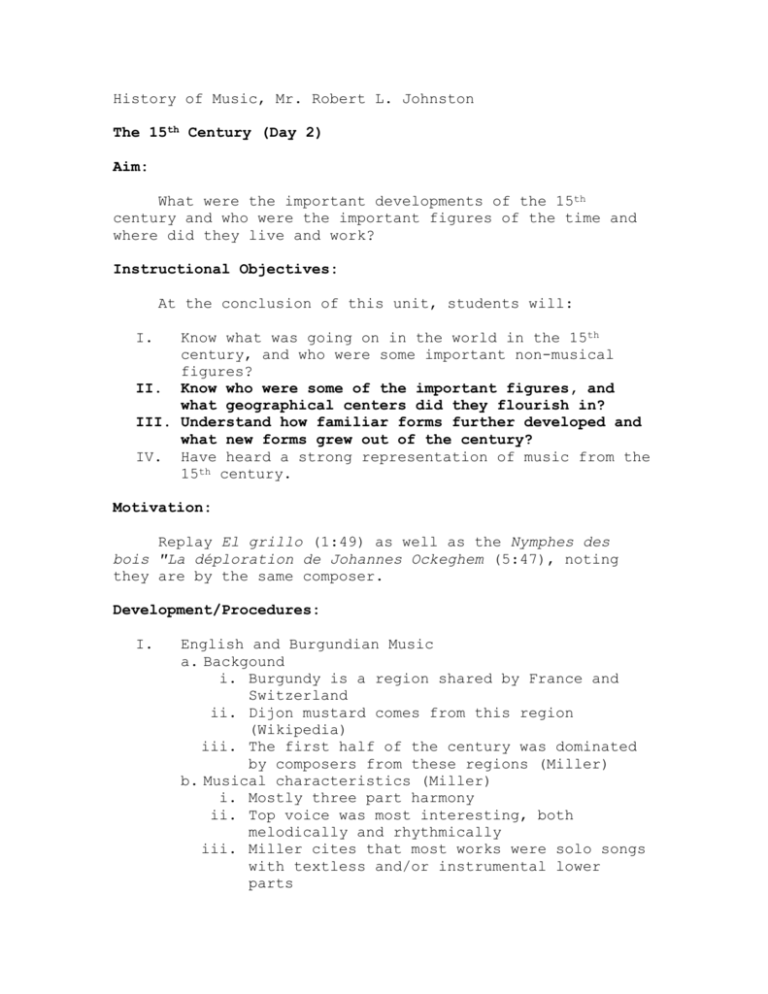
History of Music, Mr. Robert L. Johnston The 15th Century (Day 2) Aim: What were the important developments of the 15th century and who were the important figures of the time and where did they live and work? Instructional Objectives: At the conclusion of this unit, students will: I. Know what was going on in the world in the 15th century, and who were some important non-musical figures? II. Know who were some of the important figures, and what geographical centers did they flourish in? III. Understand how familiar forms further developed and what new forms grew out of the century? IV. Have heard a strong representation of music from the 15th century. Motivation: Replay El grillo (1:49) as well as the Nymphes des bois "La déploration de Johannes Ockeghem (5:47), noting they are by the same composer. Development/Procedures: I. English and Burgundian Music a. Backgound i. Burgundy is a region shared by France and Switzerland ii. Dijon mustard comes from this region (Wikipedia) iii. The first half of the century was dominated by composers from these regions (Miller) b. Musical characteristics (Miller) i. Mostly three part harmony ii. Top voice was most interesting, both melodically and rhythmically iii. Miller cites that most works were solo songs with textless and/or instrumental lower parts iv. Many melodies progressed in thirds v. Lots of triple meter vi. Use of chordal or familiar style (think of parallel motion) vii. Extensive use of parallel first inversion (sixth) chords 1. This was called discant in England 2. Called fauxbourdon elsewhere viii. Less use of cantus firmi ix. Little use of imitation x. Common use of the Landini cadence 1. Discuss homework from previous lesson. What is the Landini cadence? c. John Dunstable (ca. 1390-1453) (Wikipedia) i. English composer, one of the most famous of his time ii. His work influenced both English and Burgundian composers iii. Also an astronomer, astrologer and mathematician iv. As mentioned in class, Dunstable suffers from having many of his works missing 1. Henry VIII effected the dissolution of monasteries, and many works were destroyed 2. Therefore, we are unsure if he wrote secular music v. Play Quam pulchra es (2:48) 1. Note chordal style 2. Note harmony and compare with older music we have heard d. Guillaume Dufay (ca. 1400-1474) (Shirmer) i. Shirmer calls Dufay the most important composer of the first half of the century ii. Born near Cambrai (France) iii. Was trained as a choirboy iv. Worked in the service of the Malatesta family in Italy 1. Also worked in the service of the Papacy and the Dukes of Savoy v. Was exposed every musical style of his time 1. His early works are reflective of earlier music a. Play Resvellies Vous Et Faites Chiere Lye (4:36) 2. His later works are more reflective of the emerging English school a. Play the Introit from the Mass for St. Anthony of Padua (6:30) 3. Compare e. Notable forms (Miller) i. Mass 1. Polyphonic settings of the Ordinary 2. Use of secular song as cantus firmi ii. Carol 1. Two parts 2. Religious text 3. Numerous stanzas with the same music, and a refrain called a burden iii. Polyphonic chanson 1. Secular French texts 2. Like a solo song with the tune in the top voice 3. Use of refrains Materials of Instruction: Smart Board Various Recordings Summary: It is important at this point to remember that this is a survey course, meaning we are leaving out an extraordinary scope of material, prominent figure, and in particular, theoretical information. I should further note that you will start hearing more varied and stylistically diverse compositional voices. Assignment: Research and write a short paragraph on The Old Hall Manuscript. Bibliography: History of Music, Hugh H. Miller, Barnes & Noble Books, New York. 1972 http://en.wikipedia.org/wiki/John_Dunstaple Shirmer History of Music, Leonie Rosenstiel, general editor, Schirmer Books, New York. 1982 Suggested Reference: History of Music, Hugh H. Miller, Barnes & Noble Books, New York. 1972 Robert L. Johnston
